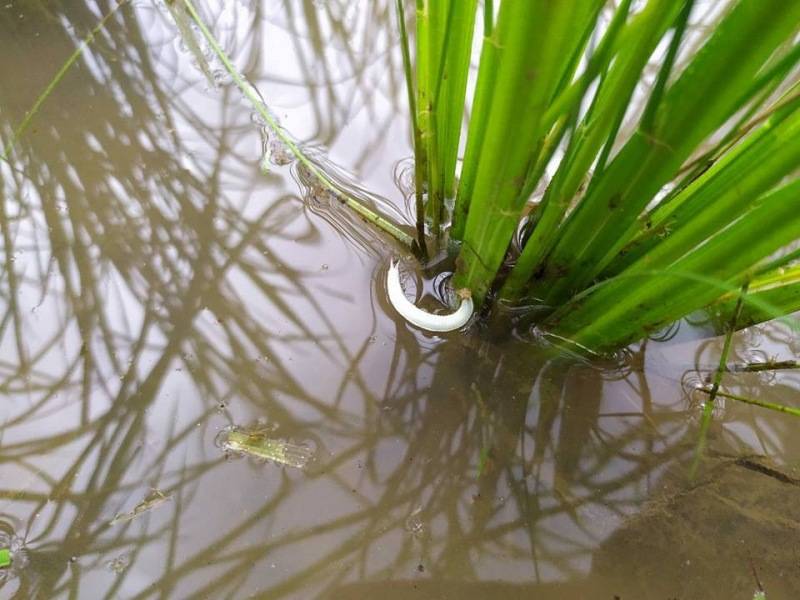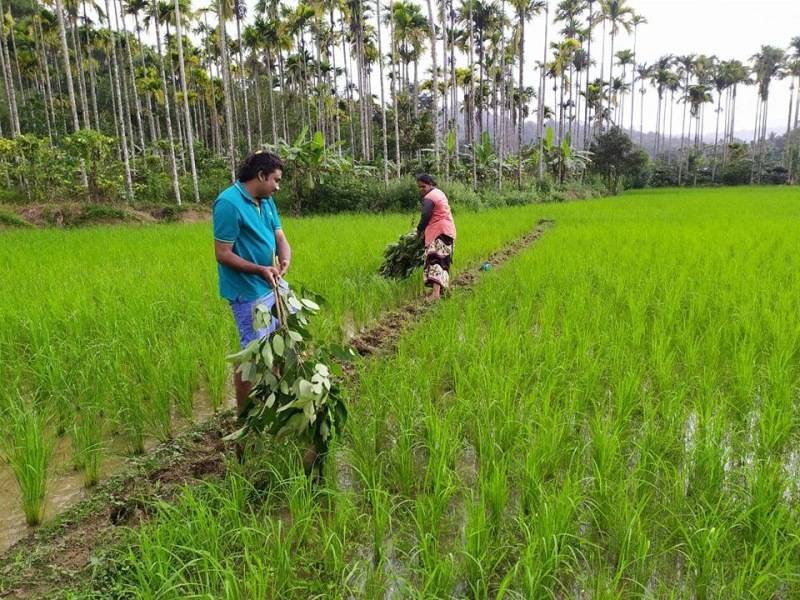
Thanal Agroecology Centre is the centre for training and research on agroecology and agro bio diversity. The centre is owned and maintained by Thanal at Panavally in Thirunelly Panchayath of Wayanad District in Kerala. Thanal promotes organic farming, helps in conserving agro biodiversity - Sustainable agriculture for safe food and food sovereignty is the key motto of Thanal trust.
Thanal Trust is behind the revival of many indigenous varieties of Rice. They have a very strong network of farmers in Kerala and actively participate in Seeds Conservation, Revival and Paddy and Wetland Conservation projects. They closely interact with farmers of the Wayanad region in Kerala.
Leaf Roller is one of the main pests of paddy. Leaf Rollers are found in abundance in Rice growing regions and are abundant in rainy seasons. The adults are nocturnal and they stay under shade to escape predation. Rice Roller infested leaves become longitudinal and whitish; the leaves become tubular and folded. The International Rice Research Institute (IRRI) reports that heavy use of fertilizers, high humidity favors the development of this pest. Infestations that occur in Reproductive phase are very difficult to control.

An interesting observation regarding prevention of leaf rollers has been observed in the Wayanad region. Leaf Roller one of the main pests of paddy is traditionally controlled by using the branches of a ficus species (Ficus hispida), Parom or Erumanuku in Malayalam. In their Agroecology Centre they try to follow some of these practices. Many tribal farmers are still practicing these methods, reducing the pesticide.
Almost all parts of Ficus hispida are used as a folklore remedy for the treatment of various ailments by the Indian traditional healers, but the leaves are of particular interest from a medicinal point of view as an antidiarrheal hepatoprotective, anti-inflammatory, antitussive, antipyretic, astringent, vulnerary, hemostatic and anti-ulcer drug, among other parts.
Thanal Trust believes that it is mostly a physical property of ficus leaves that creates some sort of irritation in worms and they fall down. When the worms fall down, the field is ‘dewatered for two days and so the worm will not survive. After that again water is allowed in the field. This is supposed to be an effective method in controlling this pest.
There is a growing interest of using traditional pest control these days. But for this different methods need to be analyzed and studied, and the information needs to be disseminated















